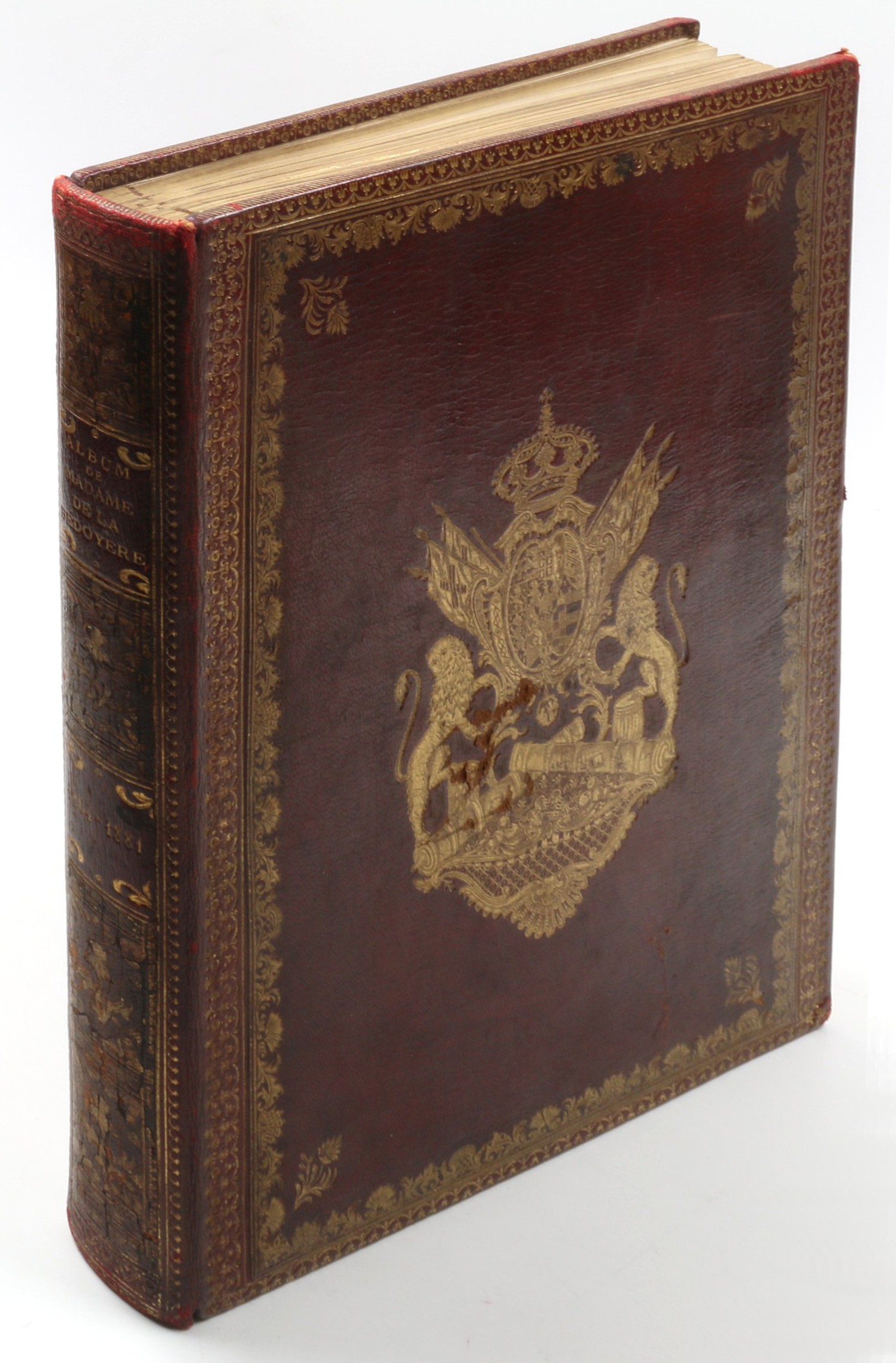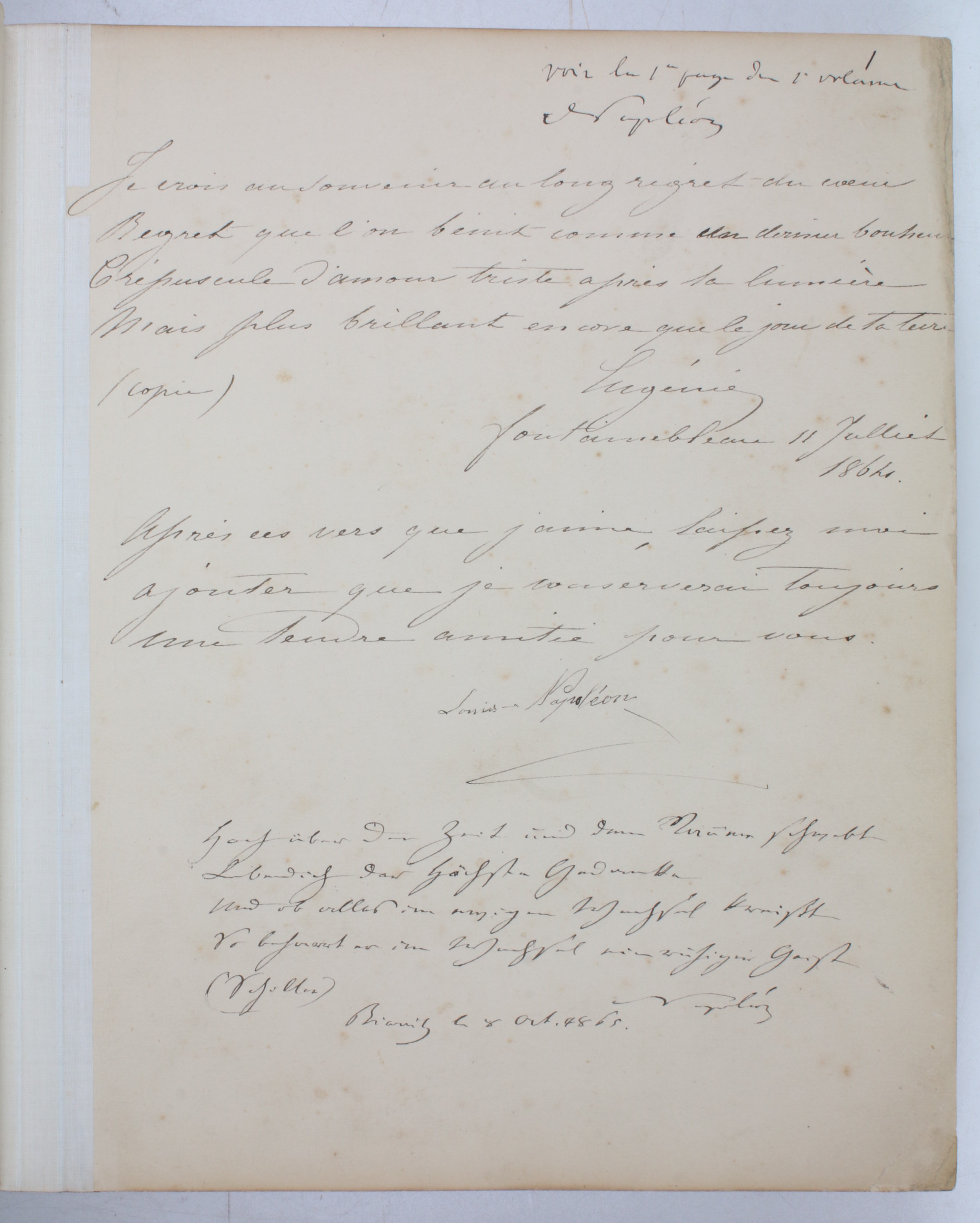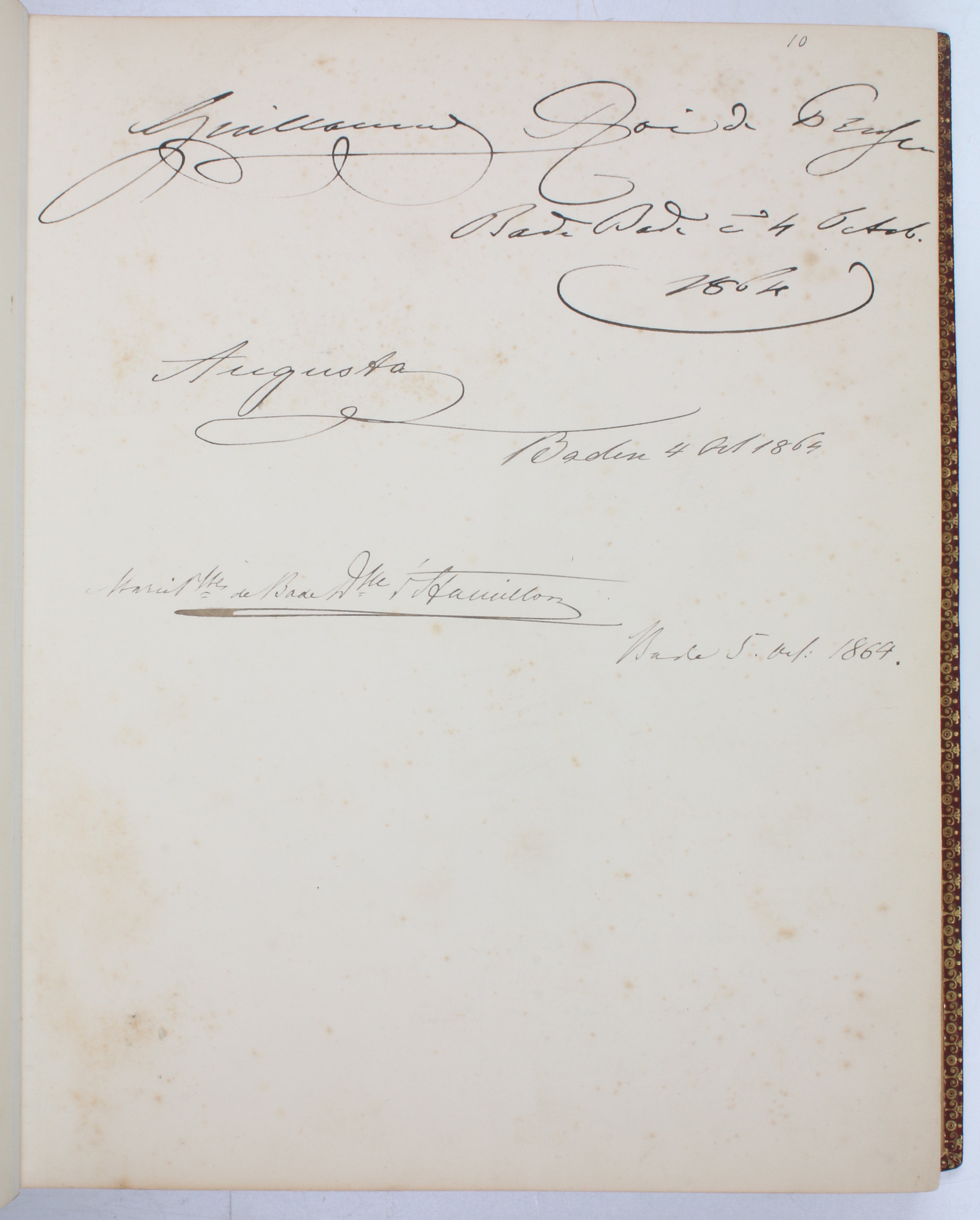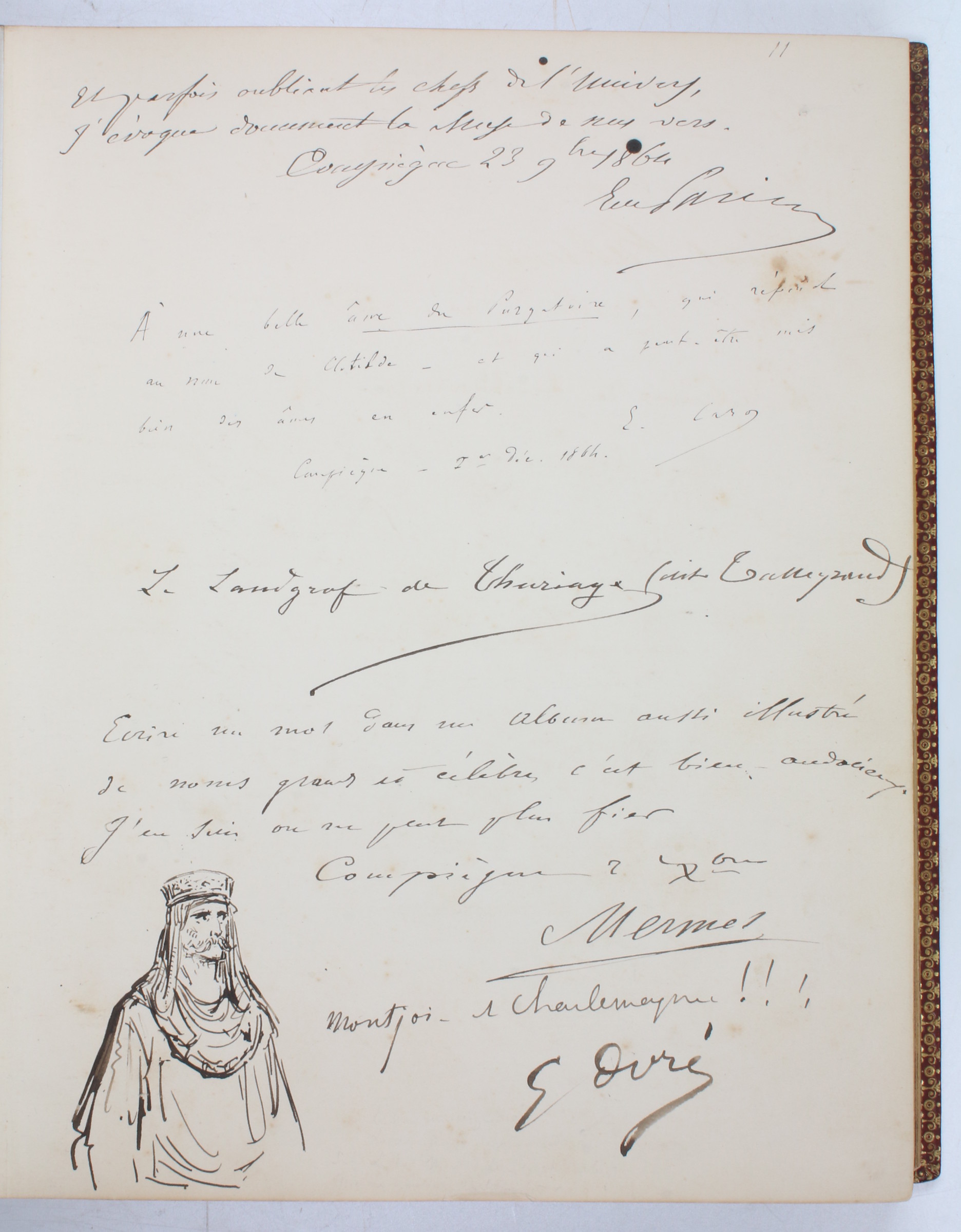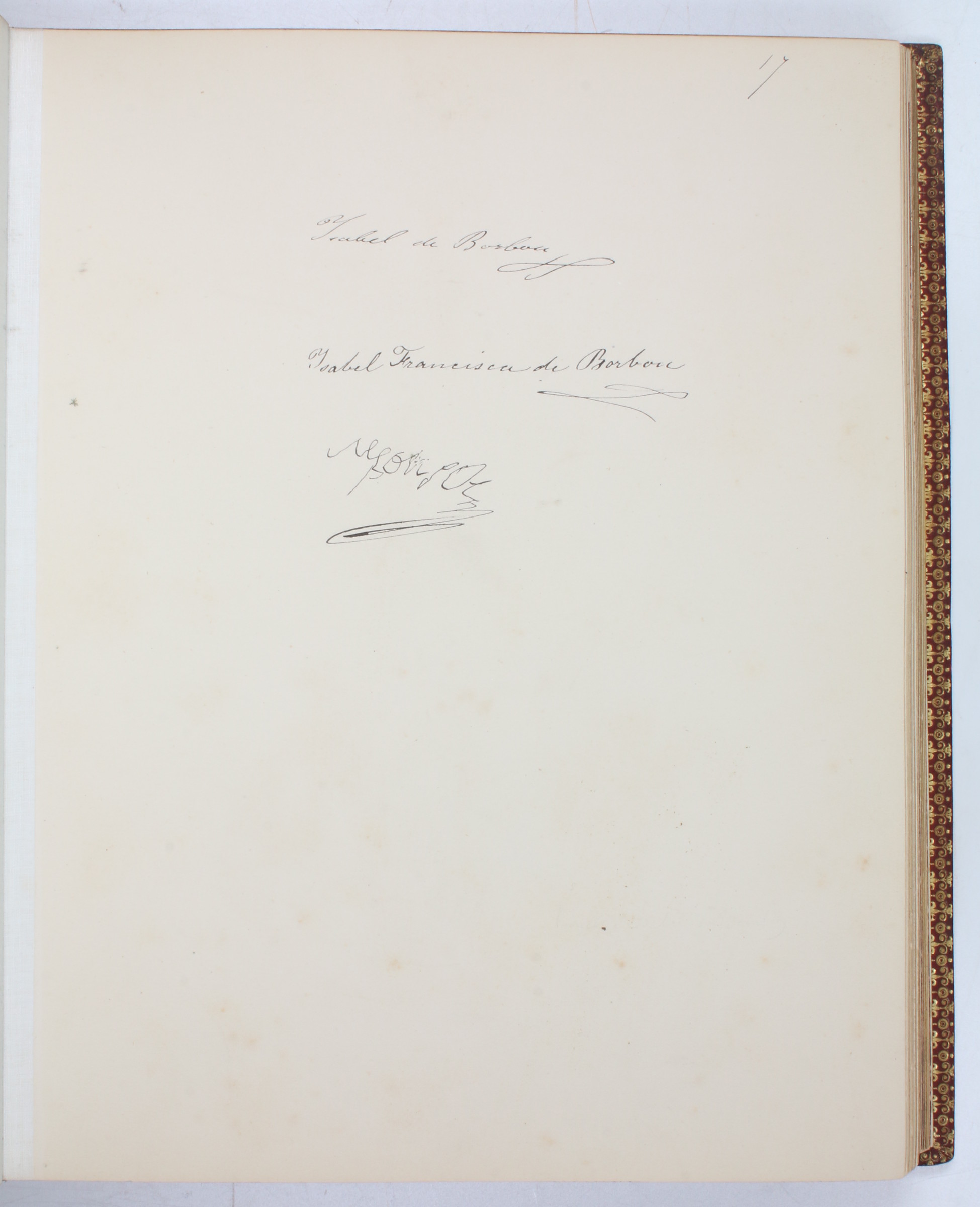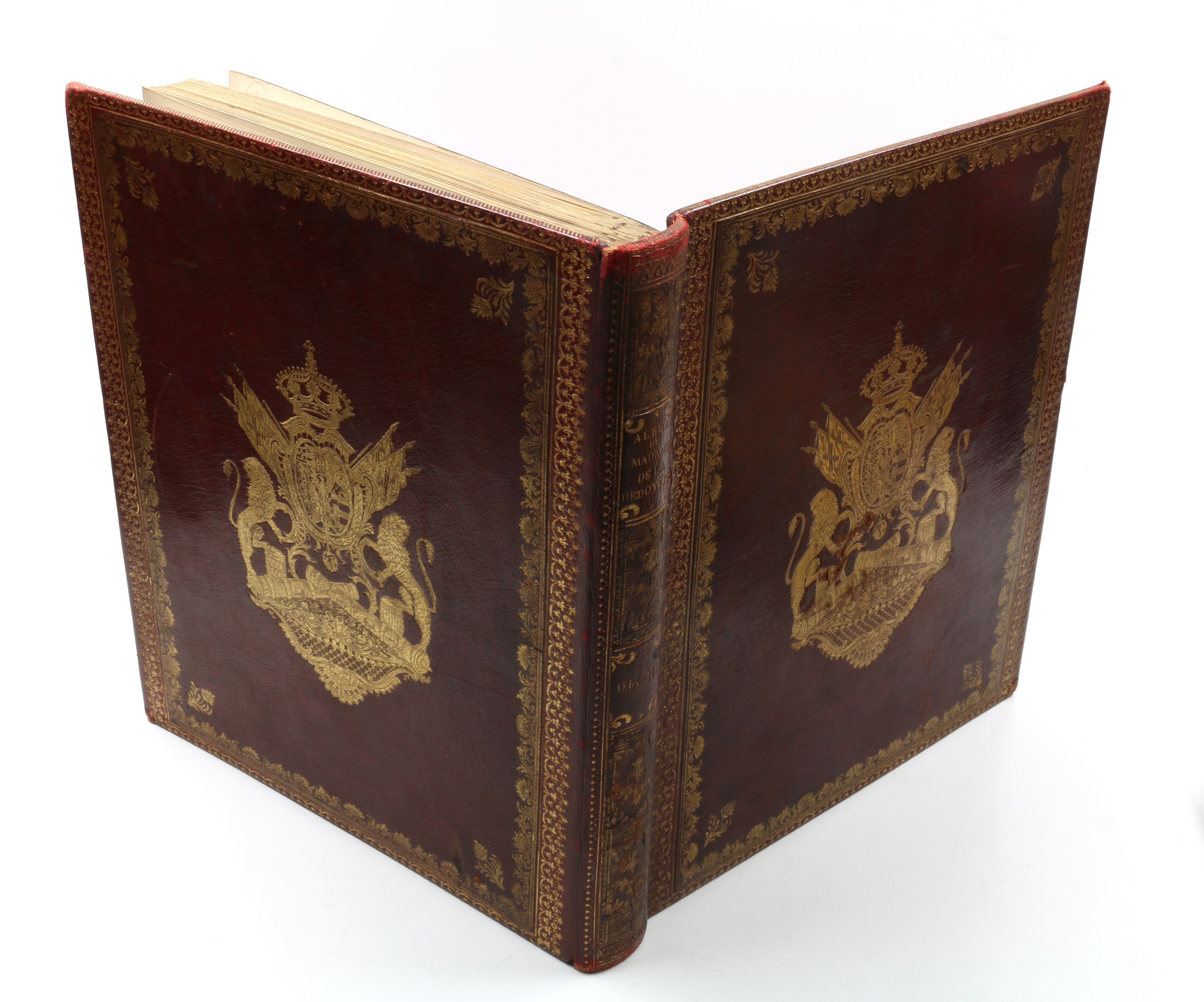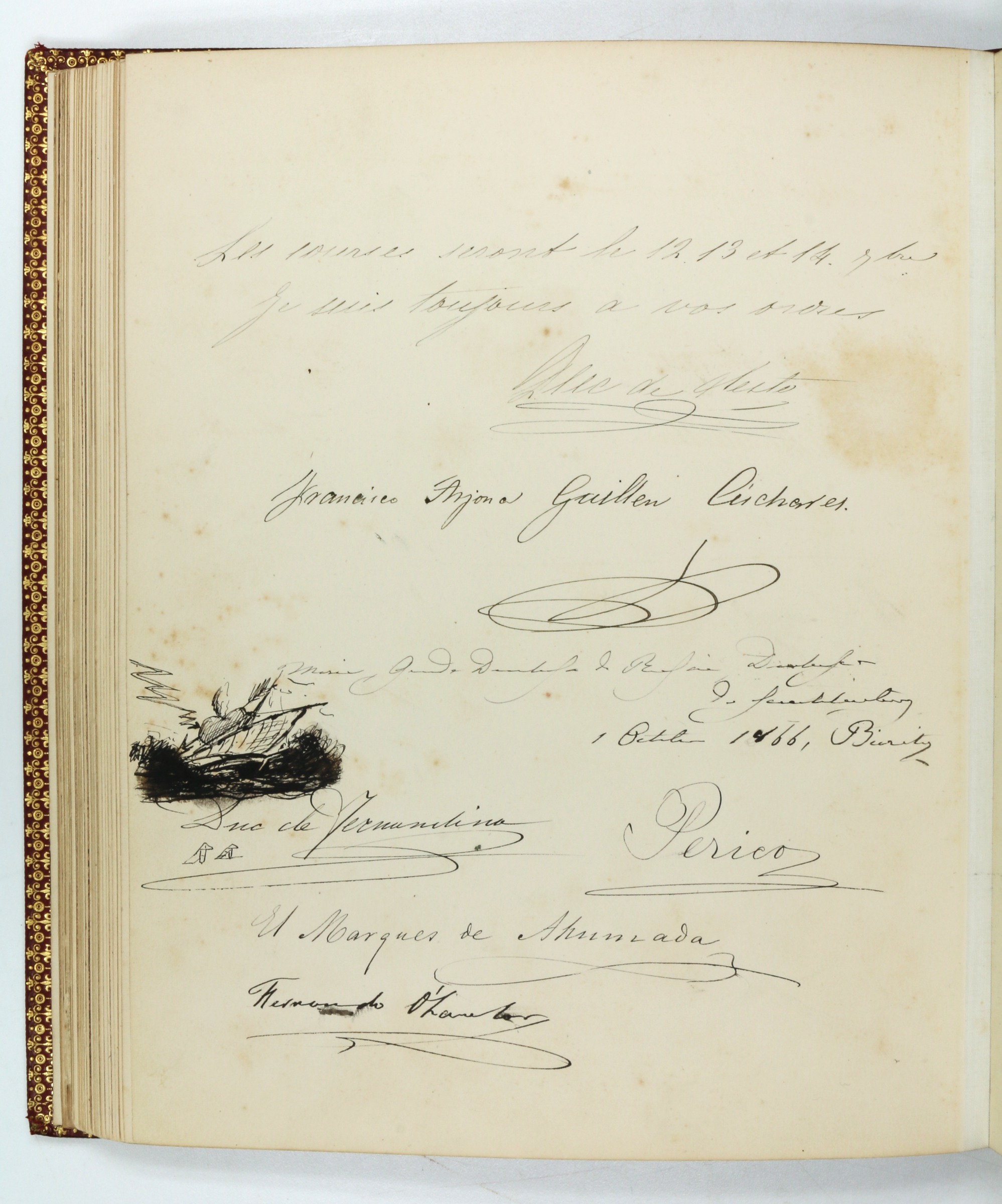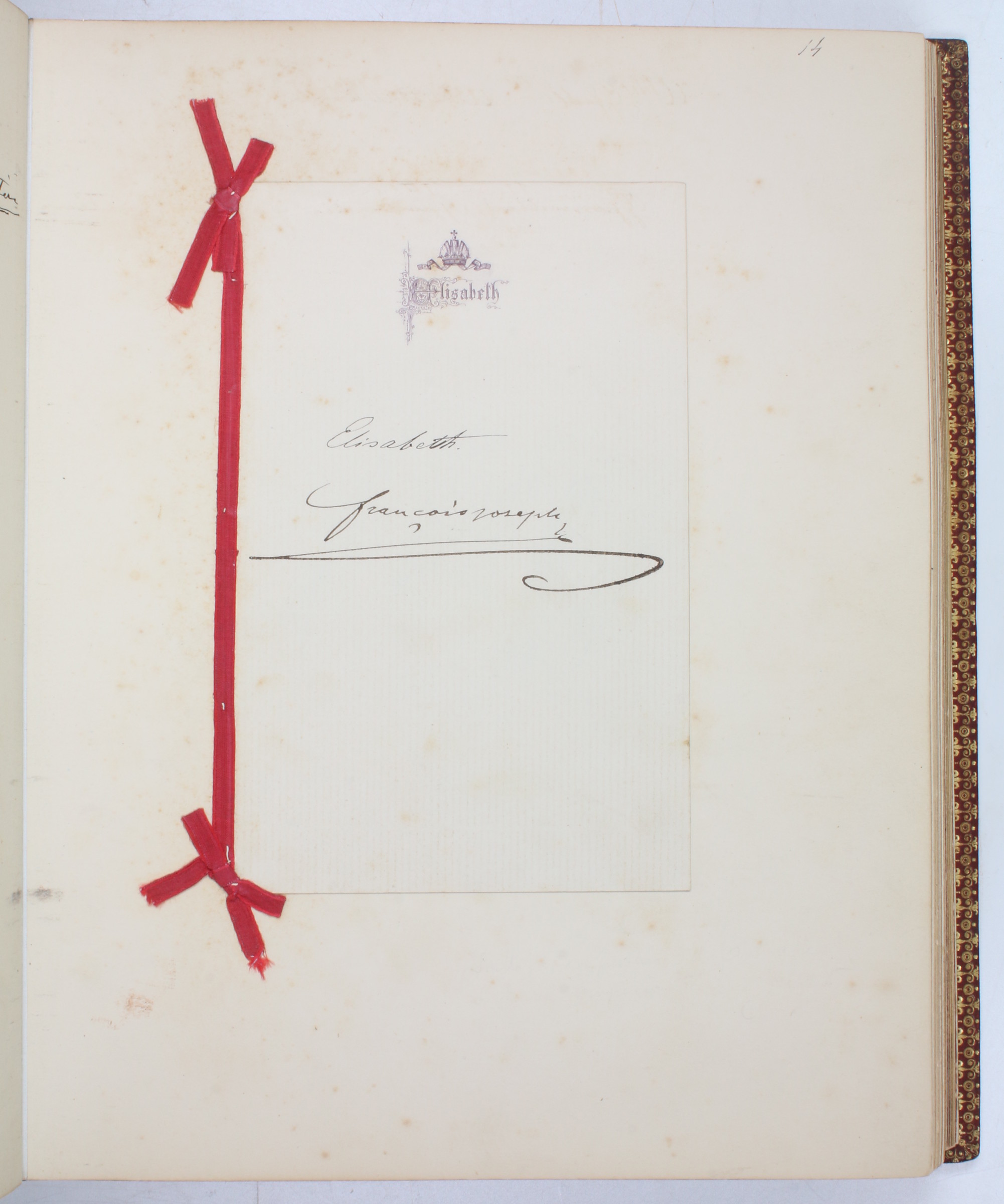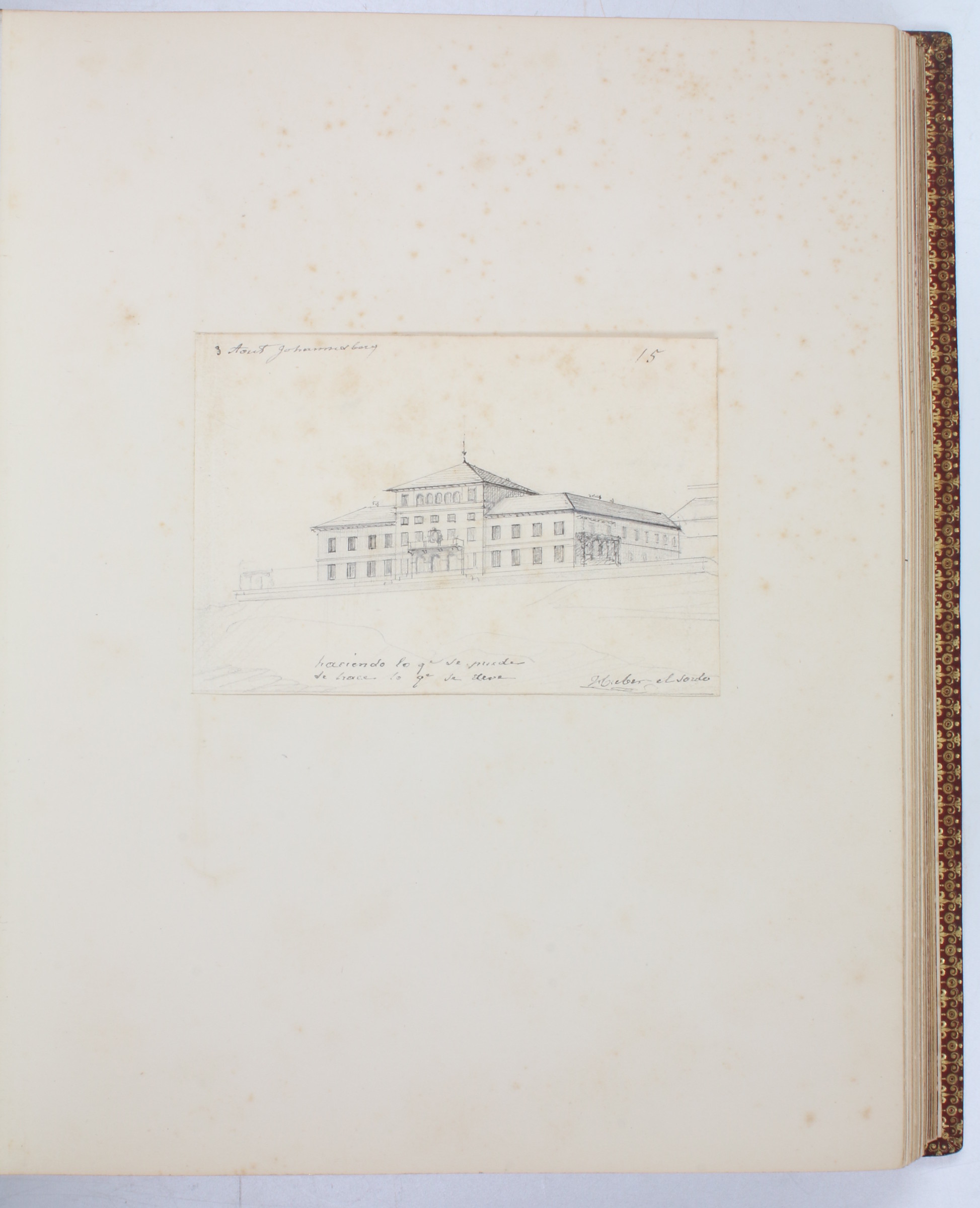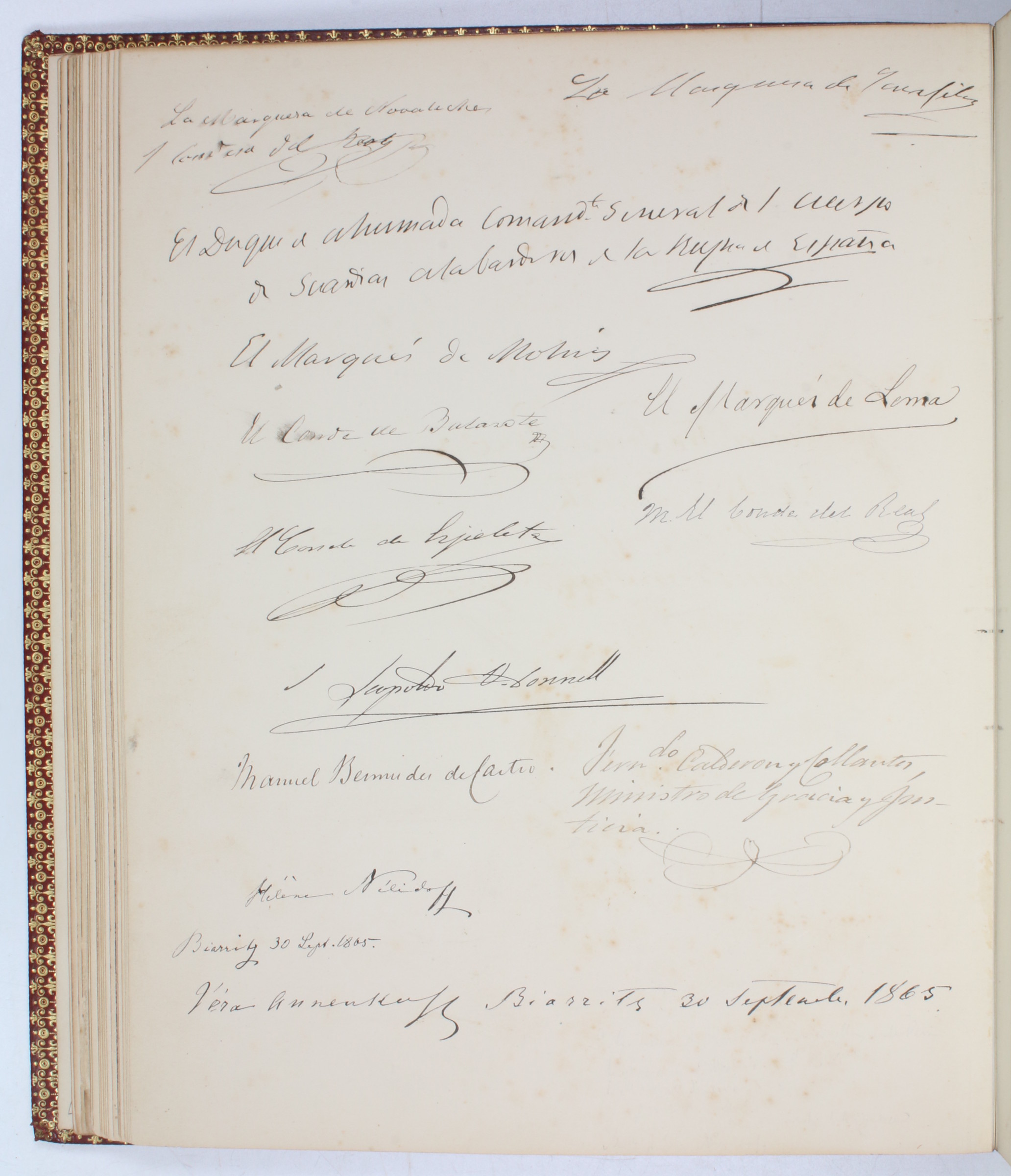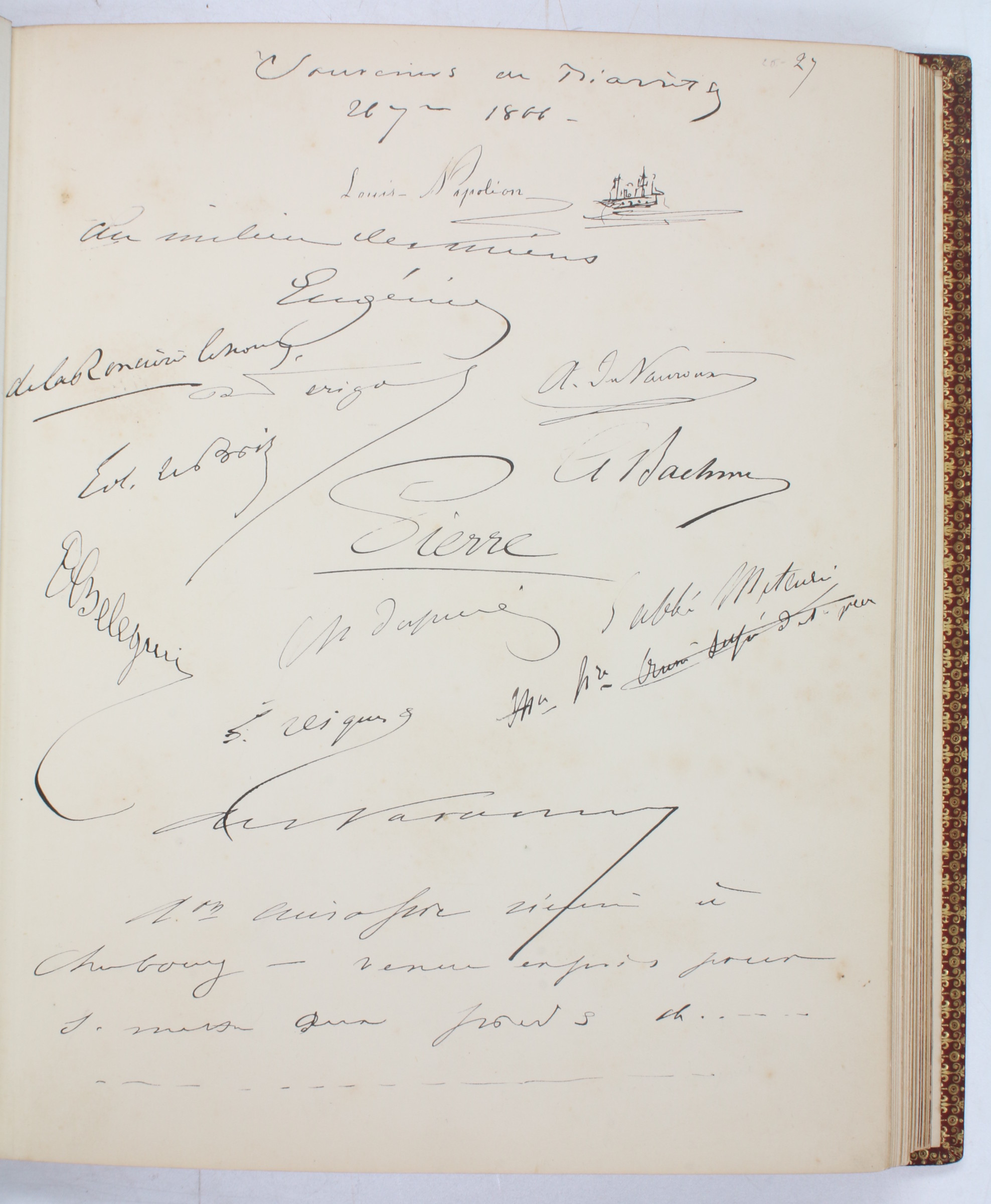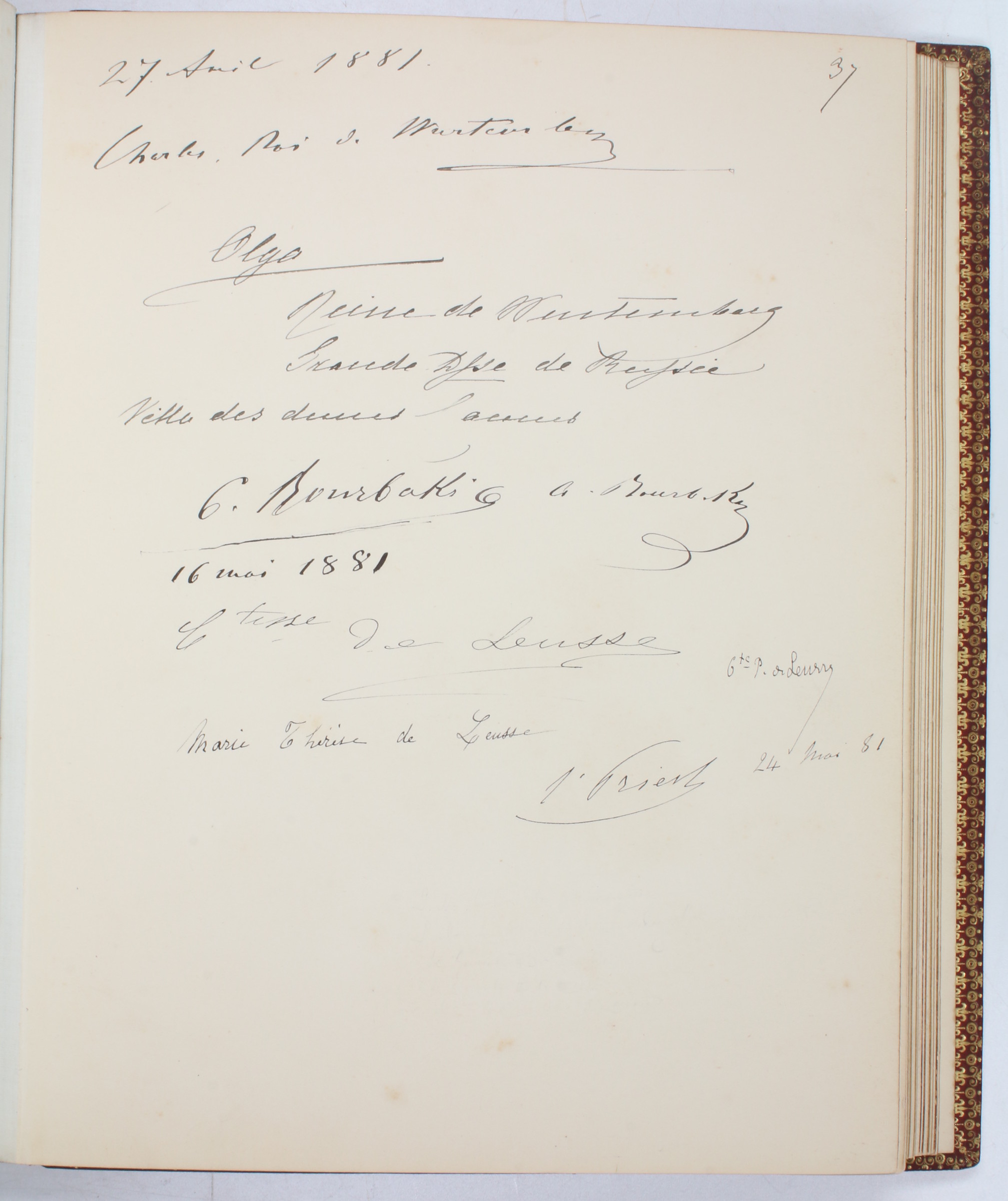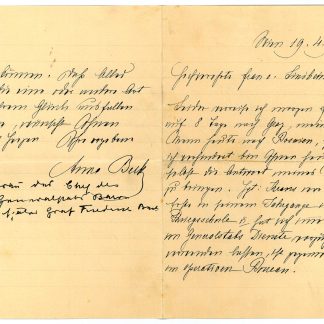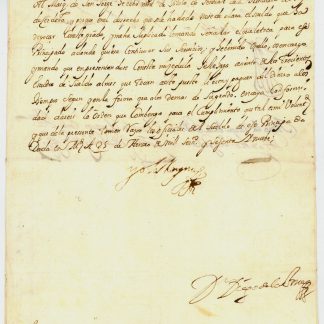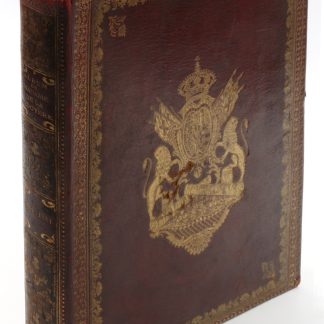Bismarck, Tsar Alexander, Emperor Franz Joseph and Empress Elisabeth at the court of Napoleon III
Friendship album of Clothilde de la Rochelambert, comtesse de La Bédoyère (1829-1884), with numerous entries by members of the European aristocracy.
4to. 34 ff., some written on both sides, irregularly counted, containing more than 250 entries (some pasted in). Red morocco with giltstamped borders and cover stampting inspired by the royal arms of Sardinia. Silk endpapers. All edges gilt.
€ 25,000.00
Exceptionally plentiful friendship album owned by Comtesse de La Bédoyère, daughter of the senator Henri de La Rochelambert (1789-1863), wife of Georges Huchet de La Bédoyère (1814-67) and court lady to Empress Eugénie, wife of Napoleon III. Indeed, the first entry in the album belongs to the the emperor himself; this is followed on the same page by Eugénie with a quotation from Sophie d'Arbouville's poem "Je crois": "Je crois au Souvenir, au long regret du cœur, / Regret que l'on bénit comme un dernier bonheur, / Crépuscule d'amour, triste après la lumière / Mais plus brillant encore que le jour de la terre!" This is succeeded by the signature of the couple's only son, the eight-year-old Napoléon Eugène Louis; at the bottom of the page is a four-line German quotation from Schiller, which Napoléon III adds in Biarritz on 8 Oct. 1865. Another entry by Eugénie is on fol. 27r, and there are further entries by her son on fol. 21r and 27r (with a little drawing).
Two other noteworthy entries are on pages 21v and 23v: the first is by Bismarck, who signed in Biarritz on the 19th of October 1865, the very month when the secret negotiations between Prussia and France had begun over possibly coalitions before the Austro-Prussian War of 1866. The second, written at about the same time, is by Leopold, Prince of Hohenzollern and his wife Antonia (fol. 23v). Leopold is considered a pawn of the high politics of his age. In 1870 Bismarck would urge him to accept the Spanish Crown, a move fiercely opposed by Napoléon III. Although Leopold quickly yielded, it was this affair that would ultimately spark the Franco-Prussian War.
The numerous other contributors include: Alexander II of Russia (9r); Amadeus I of Spain (16r); Isabella II of Spain and her children Isabella and Alfonso (17r); Sophie Queen of the Netherlands (8r); Emperor Franz Joseph I and his wife Elisabeth (14r), as well as Elisabeth's lady-in-waiting, countess Caroline Hunyady (12v); Frederick Grand Duke of Baden, and his wife Louise (9a); Marie, Princess of Baden and Duchess of Hamilton (10r); Charles, King of Württemberg, and his wife Olga (37r); Frederick, Prince of Denmark (24r); Umberto I of Italy (7r); Marie Clotilde of Savoy (wife of Prince Napoléon, 7r); Grand Duchess Maria Nikolaievna of Russia (27v); Grand Duke Charles Alexander of Saxe-Weimar-Eisenach and his wife Sophie Princess of the Netherlands (22r); Louis I of Portugal and his wife Maria Pia of Savoy (19v); Frederick, Grand Duke of Mecklenburg (13r & 17r); George, Duke of Mecklenburg, and his wife Catherine, Grand Duchess of Russia (18r); Marie, Grand Duchess of Mecklenburg-Strelitz (4v); Adolf, Duke of Nassau (9r & 14v); Pauline, Princess Metternich (2v, 8v, 14v with her daughter Sophie and her aunt Hermine, 31r with her daughters Sophie, Antoinette Pascalina, and Clementine Marie, as well as Rosa, Duchess of Hohenlohe-Sternberg); Richard, Prince Metternich (9r); William I of Prussia and his wife Augusta (10r); Francis, Duke of Harrach (4v); Joseph Joachim Napoleon Murat (2r & 20v); Field Marshal Frederick of Wrangel (7v); the Duchess of Castiglione Colonna (known as a sculptor under the name Marcello, née Adèle d'Affry, 3v); Mélanie Renouard de Bussière Comtesse de Pourtalès (14v); Admiral Edmond Jurien de La Gravière (a four-line poem signed, 9v); Admiral Wilhelm von Tegetthoff (28v); Gustav Prince Blücher von Wahlstatt (9v, born 11 Oct. 1837, knight of the Order of Malta); the Mexican monarchist and ambassador to the court of Napoléon III, José Manuel Hidalgo y Esnaurrízar (3v); the philosopher Elme Marie Caro (a three-line poem, 11r); the politician and economist Félix Esquirou de Parieu (a nearly full-page poem, 10v & 11r); the artist Gustave Doré (with a fine drawing, 11r); the writers Hortense Cornu (7v), Edmond About (28r), and Prosper Mérimée (19r & 20v); Princess Alexandrine Dolgorouky (1834-1913, the mistress of the Tsar, 2v, with two lines from Byron); Ignacio Álvarez de Toledo y Palafox Portocarrero, Conte di Sclafani (son of the 16th Duque de Medina Sidonia, 1812-78, full-page sonnet 22v); Alexandre conte Colonna-Walewski (14v; possibly with his second wife Anna Maria Ricci, daughter of count Zanobi di Ricci and Isabelle née Princess Poniatowska, signing "Maria Walewski(y)". The album's final contribution is a photographic reproduction of F. X. Winterhalter's well-known portrait of Empress Eugénie.
Binding slightly rubbed; interior shows occasional brownstaining, but altogether in excellent state of preservation.

